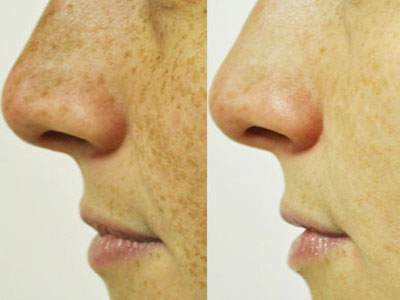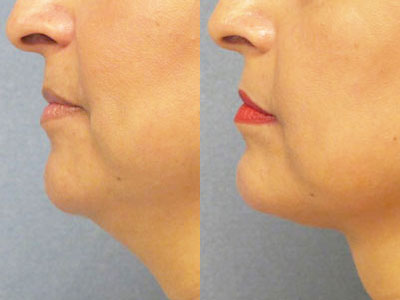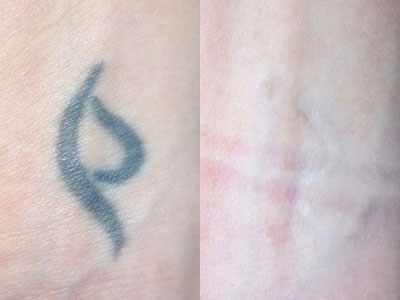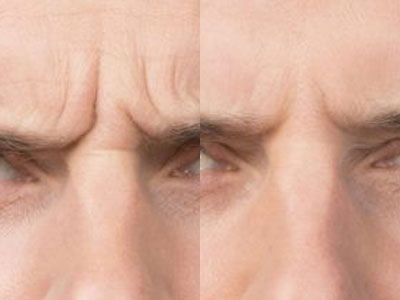Toxic.
That word has been thrown around rather loosely in the last 5-10 years.
Now, products like jarred baby foods are potentially toxic. Apple juice is toxic. Cosmetics are toxic.
It seems like we can’t use a product or eat a food that hasn’t been on the hot seat for the possibility of being toxic.
We are not saying that these things aren’t potentially toxic. Apple juice isn’t our area of expertise.
The point is that the term toxic is an easy one that can be used to insight fear and clickbait consumers into reading articles.
Moderation is the key. If you go outside the limits of what is being recommended by professionals in the field, that is where you could run into an issue. This can be the case for any “toxic” product.
The truth is that over 6 million people great Botox each year. Of those, only a small percentage of people have had adverse effects. That percentage is even smaller for the ones that follow the directions of professionals.
Let’s take a deep dive into the issue to share why Botox isn’t toxic and why you should have peace of mind about Botox.
Botulinum Toxin: What Is It Exactly?

Botox is a drug that is injected into the desired location on a person’s body that essentially blocks signals from your nerves to your muscles.
It is made from a “toxin” that is called botulinum type A and is produced from the bacterium Clostridium botulinum.
One place that botox gets a bad name is because the same toxin (in much higher amounts) causes botulism. This is a serious and life-threatening form of food poisoning and the effects depend on the amount the person was exposed to.
Botox is injected in small controlled amounts. The FDA recommends that you should not exceed a total of 360 units in a 3 month period.
On average, a person usually receives dosages between 8 to 20 units on their forehead for wrinkles, just to give perspective. This is well under the recommended max amount.
The History Of Botox
So how did this procedure even start? What would make people decide to first inject themselves with this botulinum toxin?
In nature, an infection involving this bacterium causes paralysis in certain muscles. Quite simply, when muscles a body needs to breathe are paralyzed, it can cause death. While there are several strains of Clostridium botulinum, only a few are used in a clinical setting.
Besides wrinkles, Botox can be used to treat migraines, incontinence, and even cervical dystonia (neck and shoulder spasms), just to name a few.
So the fact that this causes paralysis was explored more deeply in the 1970s, since paralyzing the muscles that caused wrinkles seemed like it could actually be a viable option.
It started by scientists trying to use botulinum toxin to treat crossed eyes. When they were in the testing phases, they observed that it also reduced the wrinkles between the eyebrows.
And there it is. A billion-dollar industry was born.
After testing was completed and it was branded as Botox, it received FDA approval for a variety of uses, both medical and cosmetic.
The Injection Process Is Safe
The Botox is usually administered with a small-gauge needle and the area can be pre-treated with a topical anesthetic to counter any discomfort. For the procedure specifically, the botulinum toxin is diluted in saline and injected into the neuromuscular tissue. Botox aims to prevent certain muscles from contracting.
The science behind it is that the neurotoxins in the Botox target the nervous system. This disrupts the signaling between the neurons. That disruption can help cosmetically, by reducing the appearance of wrinkles or help with muscular medical conditions. When say, your forehead muscles, can’t contract, they begin to look more flattened out and smooth.
3 Independent Studies That Prove That Botox Is Safe

Study #1: An Evaluation of Use of Botulinum Toxin Type A in the Management of Dynamic Forehead Wrinkles – A Clinical Study
In 2016, the Journal of Clinical & Diagnostic Research did a study on the effectiveness of the Botox injections in treating forehead wrinkles. A series of photographic evidence was collected before the procedure, then at the 1-week point, the 4th week and the 16th week.
After comparing the patients involved in the study, they came to the conclusion that, “Treatment with Botox is simple, safe and an effective modality for reduction of forehead wrinkles.”
They also go on to say, “It offers an alternative management in a cost-effective way when compared to surgical procedures.” You can read the details about the study here: Click this link.
This study is important because it is noting that the process is safe, a much better option to surgical procedures and the results are consistent.
Study #2: Safety of botulinum toxin A in aesthetic treatments: a systematic review of clinical studies
The American Society for Dermatologic Surgery also did a review of various clinical studies on Botox.
They focused on investigating the safety data on the use of the treatments for facial aesthetics. In addition, they worked to confirm their safety profiles.
Over 8,000 subjects were studied in this publication and they came to the conclusion that short-term safety in cosmetic procedure was found in all three commercial formulations studied.
You can read the specifics about there findings and process here: Click this link.
This study was completed a few years ago and since this time, the procedures have only been getting safer for the potential Botox users.
Study #3: Investigation of Efficacy and Safety of Botulinum Toxin A (Botox-Allergan Inc) in Migraine Headaches
This study, provided by Yale University, measured if Botox was effective for migraine relief.
They found that of those that they sampled, there was a significant improvement in the number of days that the participants had relief compared to the placebo group. Dig into the numbers here: Click this link.
This shows that the benefits of using Botox for cosmetic and medical needs far outweigh the small percentage of those that have an adverse reaction. Most reactions stem from underlying health issues so make sure to give a full account of your medical history to your administrator in order to make sure that this option is the right option for you.






